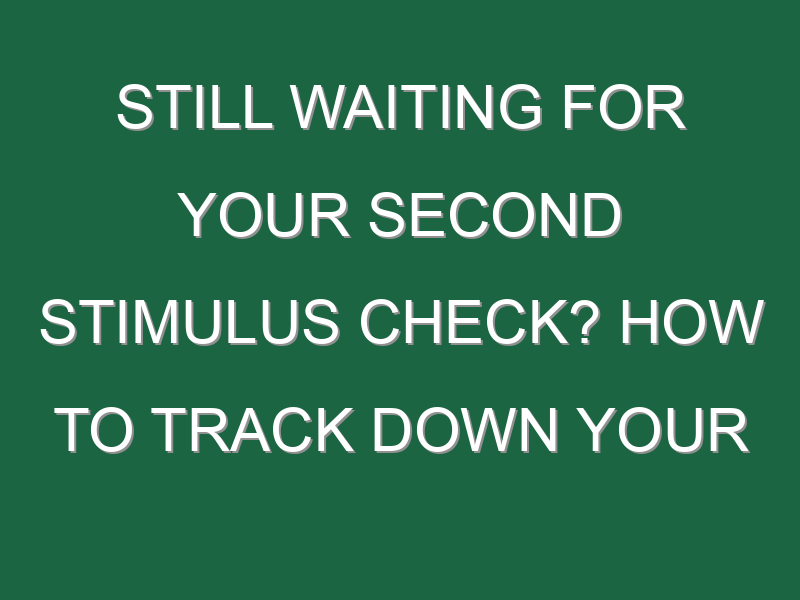If you’ve been checking your bank account (or your mailbox) every day for your stimulus check to no avail, there’s a better way to see if your money is en route.
The IRS has a portal called Get My Payment, which allows you to input your Social Security number, date of birth, and address, and “track” your stimulus check.
According to the agency, checks started going out via direct deposit on Dec. 29. At the time the agency wrote in a press release, “The initial direct deposit payments may begin arriving as early as tonight for some and will continue into next week. Paper checks will begin to be mailed tomorrow, Wednesday, December 30.”
Who is eligible for the $600 checks? How much should I expect?
The checks this time around will be up to $600 for individuals or $1,200 for married couples and up to $600 for each qualifying child. These stimulus checks will decrease for households with 2019 adjusted gross income—that is, federally taxable income—above $75,000 per individual or $150,000 per qualified couple. The checks completely phase out for individuals earning above $99,000, and joint filers with no children at $198,000.
You didn’t get either stimulus check? You might still be in luck
One thing to keep in mind: Those who did not receive a first or second stimulus check but are eligible to claim one will be able to get that money when they file their 2020 taxes. “The IRS urges taxpayers who didn’t receive a payment this year to review the eligibility criteria when they file their 2020 taxes; many people, including recent college graduates, may be eligible to claim it. People will see the Economic Impact Payment (EIP) referred to as the Recovery Rebate Credit (RRC) on Form 1040 or Form 1040-SR since the EIPs are an advance payment of the RRC,” according to the agency.
What about a third stimulus check?
The odds of another direct payment, or a third coronavirus stimulus check, rose after the pair of U.S. Senate wins by the Democratic Party flipped control of the chamber to Democrats. Goldman Sachs wrote in a report Monday that “Democratic control of the Senate is likely to lead to greater fiscal stimulus in the near term. We expect Congress to approve an additional $750bn (3.4% of GDP) in additional fiscal relief in late February or early March.”
Sen. Chuck Schumer, who is expected to become the Senate majority leader, told reporters on Wednesday that “one of the first things that I want to do when our new Senators are seated is deliver the $2,000 checks to the American families.” Schumer can count on a signature from incoming President Joe Biden, who has already reaffirmed support for a $2,000 stimulus check.
The IRS adds, “If additional legislation is enacted to provide for an additional amount, the Economic Impact Payments that have been issued will be topped up as quickly as possible.”
More must-read finance coverage from Fortune:
- It’s officially a blue wave. What that historically means for stocks
- Democrats plan to use Senate win to pass $2,000 stimulus checks
- This calculator shows the “grim math” of how much leaving the workforce during COVID will cost you
- The fundamental flaw in cap-weighted index funds
- 2 U-turns in 2 days: Why the NYSE finally decided to delist 3 Chinese companies



